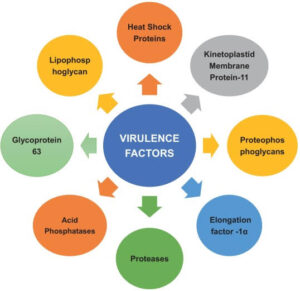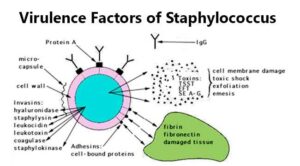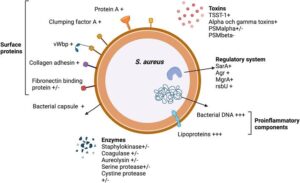Back to: MICROBIOLOGY 100 LEVEL
Welcome to class!
Hello, brilliant one! I’m super glad you’re here again, ready to level up your mind. Today, we’re talking about something that makes disease-causing microbes more powerful. It’s like asking: what gives a thief the tools to break into a house and cause damage? In microbiology, these tools are called virulence factors. Let’s unpack that together—with real-life examples you can relate to!
Virulence Factors: Enzymes, Toxins, Capsules
What are Virulence Factors?
Virulence factors are the special features or weapons that microbes (like bacteria and viruses) use to invade the body, escape the immune system, and cause disease. Not all microbes are harmful—but when they have strong virulence factors, they can become very dangerous.

Think of virulence factors as the cutlass, torchlight, ladder, and disguise a robber might use to sneak into a house and escape being caught. Now let’s look at three major types: enzymes, toxins, and capsules.
1. Enzymes
Some microbes produce special enzymes that help them break through your body’s defences. These enzymes make it easier for them to spread and cause infection.
Hyaluronidase: breaks down tissue glue (hyaluronic acid) and helps bacteria spread through the body.
Coagulase: helps bacteria form blood clots to hide from immune cells.
Streptokinase: breaks down clots to help bacteria escape and move around.
Example: A bacterium like Staphylococcus aureus uses coagulase to protect itself inside clots, almost like hiding in a room with a locked door.
2. Toxin
Toxins are harmful chemicals that bacteria release to damage your body’s tissues or disrupt normal functions.

Exotoxins: produced and released while the microbe is alive. Example: Clostridium tetani releases a toxin that causes severe muscle spasms.
Endotoxins: found in the outer part of certain bacteria (like E. coli) and are released when the bacteria die.
Example: When someone has food poisoning from E. coli, it’s usually because of the endotoxins that irritate the gut.
3. Capsules
Capsules are thick, jelly-like coatings around some bacteria that help them escape being eaten by immune cells.

Example: Think of capsules like a bulletproof jacket. Streptococcus pneumoniae has a capsule that makes it hard for the body to catch and destroy it.
Capsules also help bacteria stick to surfaces—like the lining of your lungs or throat—so they don’t get washed away easily.
Summary
- Virulence factors are features that help microbes cause disease.
- Enzymes help bacteria invade tissues and spread.
- Toxins damage body cells or disrupt body functions.
- Capsules protect bacteria from immune attack and help them stick to body surfaces.
Evaluation
- What are virulence factors?
- Give two examples of enzymes that act as virulence factors.
- What is the difference between exotoxins and endotoxins?
- How does a capsule help bacteria survive in the body?
- Name one bacterium that produces a capsule and one that produces a toxin.
Every time you understand a concept like this, you build a stronger future for yourself. Whether you dream of being a scientist, doctor, or researcher, Afrilearn is right here with you. Keep learning, keep shining—you’ve got this!in a room with a locked door.
